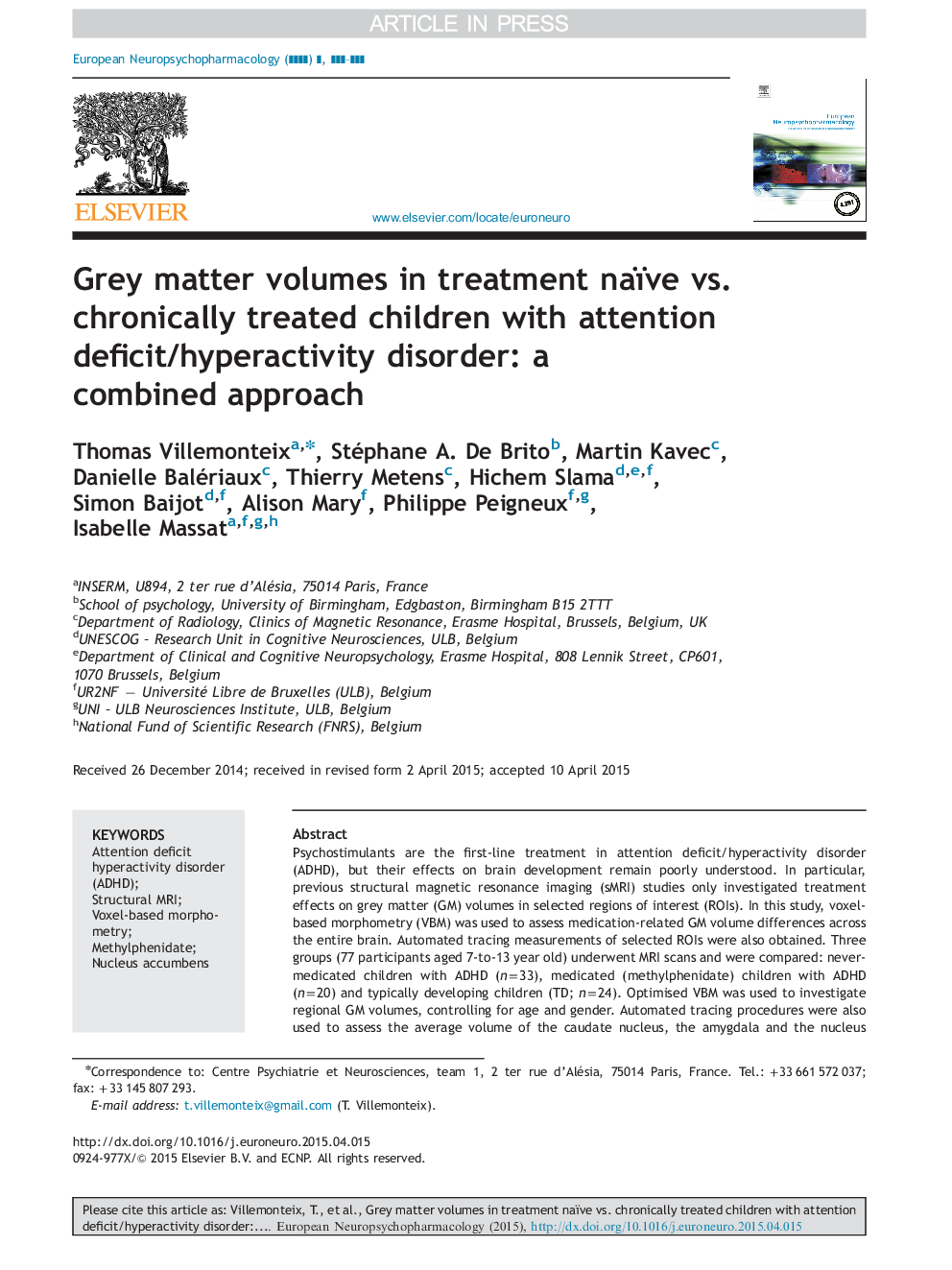| Article ID | Journal | Published Year | Pages | File Type |
|---|---|---|---|---|
| 10298069 | European Neuropsychopharmacology | 2015 | 10 Pages |
Abstract
Psychostimulants are the first-line treatment in attention deficit/hyperactivity disorder (ADHD), but their effects on brain development remain poorly understood. In particular, previous structural magnetic resonance imaging (sMRI) studies only investigated treatment effects on grey matter (GM) volumes in selected regions of interest (ROIs). In this study, voxel-based morphometry (VBM) was used to assess medication-related GM volume differences across the entire brain. Automated tracing measurements of selected ROIs were also obtained. Three groups (77 participants aged 7-to-13 year old) underwent MRI scans and were compared: never-medicated children with ADHD (n=33), medicated (methylphenidate) children with ADHD (n=20) and typically developing children (TD; n=24). Optimised VBM was used to investigate regional GM volumes, controlling for age and gender. Automated tracing procedures were also used to assess the average volume of the caudate nucleus, the amygdala and the nucleus accumbens. When compared to both medicated children with ADHD and TD children, never-medicated children with ADHD exhibited decreased GM volume in the insula and in the middle temporal gyrus. When compared to TD children, medicated children with ADHD had decreased GM volume in the middle frontal gyrus and in the precentral gyrus. Finally, ROI analyses revealed a significant association between duration of treatment and GM volume of the left nucleus accumbens in medicated children with ADHD. In conclusion, this study documents potential methylphenidate-related GM volume normalization and deviation in previously unexplored brain structures, and reports a positive association between treatment history and GM volume in the nucleus accumbens, a key region for reward-processing.
Keywords
Related Topics
Life Sciences
Neuroscience
Biological Psychiatry
Authors
Thomas Villemonteix, Stéphane A. De Brito, Martin Kavec, Danielle Balériaux, Thierry Metens, Hichem Slama, Simon Baijot, Alison Mary, Philippe Peigneux, Isabelle Massat,
